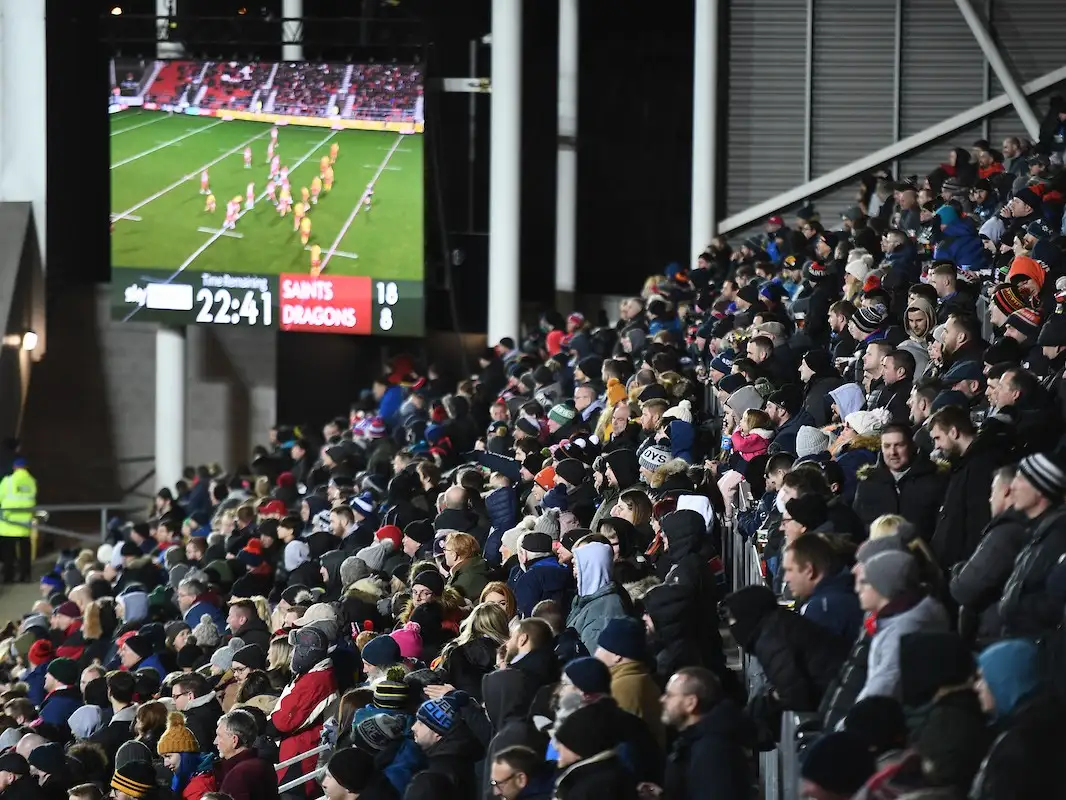Are ball in play stats overrated? The product versus the game

One of the less headline-grabbing elements of IMG’s preliminary proposals for re-imagining rugby league was the separation between the product and the game.
Rugby league’s regular re-invention over the past few decades has seen fans become obsessive over the structure – how many teams, where those teams are and whether there is promotion and relegation in between however many number of leagues there happens to be.
Entwined with all that are the common complaints over the disciplinary process and the constant tweaking of the laws of the game that make it difficult for casual fans to keep up with year-on-year.
All of the above, some claim, are contributing to the narrative of impending doom facing rugby league.
IMG, however, were keen to point out that the focus needs to be on the product, meaning the match day experience, fan engagement and the presentation of the sport, to help drive revenue growth.
IMG saying the focus needs to be on the product (matchday experience, fan engagement and presentation) to help drive revenue growth, rather than the game (laws, number of teams, structure etc)
— James Gordon (@jdgsport) September 28, 2022
While the structure – and notably the return to a form of licensing – will inevitably grab the headlines in the short-term, it should then provide a line in the sand after which the product can be the sole focus.
Elements of the game have evolved over the years to improve the product with varying success. The 10-metre offside rule, the 40/20 kick and the free play are some examples.
Other changes, like removing the shoulder charge, rules around ball steals and six-again, also change the fabric of the game.
Speeding up the game and more ball in play
Post-lockdown, Super League chiefs were keen to point out how some of these elements had helped contribute to what they perceived to be a better product.
Ball in play time had increased to over 63 minutes per 80 minute match, a near 10% increase on figures from before lockdown. They said that games are shorter, faster and more intense – the presumption being that’s what people want.
Those figures mean that the ball is in play for 67% of a rugby league match.
Over the past two decades, the NFL has grown significantly in to the UK marketplace despite its stop start nature. An American study estimated that a mere 11 minutes of its total broadcast time, on average more than three hours in length, saw the ball in play. That’s a staggering 5.79%, yet it doesn’t stop it being one of the most commercialised and cash-rich sports leagues in the world.
Comparatively, other popular American sports basketball and ice hockey are always in action when the clock is running, but that only accounts for between 50-55% of the total time taken from the first whistle to the last.
The theory behind the success of American Football in spite of those figures is that “anticipation is the greatest joy” and the pauses create great debate and expectation as to what happens next. While the ball might be in play more in football (soccer) and rugby league, that might just be endless passing side-to-side or five drives and a kick back and forth.
In Premier League football, the ball is in play on average for 54 minutes (60%). At the recent World Cup in Qatar, we have seen significantly increased amounts of added on time as part of a directive to minimise time wasting. Some argue that football should have a stop-start clock, like many other sports.
Flow of game, or for commercial opportunities?
The ball in play debate surfaced again recently when World Rugby chiefs revealed they were looking at ways to improve the flow of international rugby union.
The proposals include a shot-clock timer, similar to the one introduced a few seasons ago in Super League, to speed up scrums, line-outs and kicks at goal.
On the contrary, the UK’s Elite Ice Hockey League trialled a so-called power break earlier this season, giving host clubs the ability to call a 60-second ‘commercial timeout’ for sponsorship opportunities either in the arena or on broadcast coverage.
Creating, and filling, greater commercial opportunities might be a better priority for Super League than increasing its ball in play time.
After all, the argument has long been that the product on the field isn’t the issue.
More on IMG
Will IMG succeed where others have failed since the 1970s?
Calls for IMG shake-up: Rugby league can’t keep doing the same thing
IMG on relegation, international focus and scrapping Magic Weekend